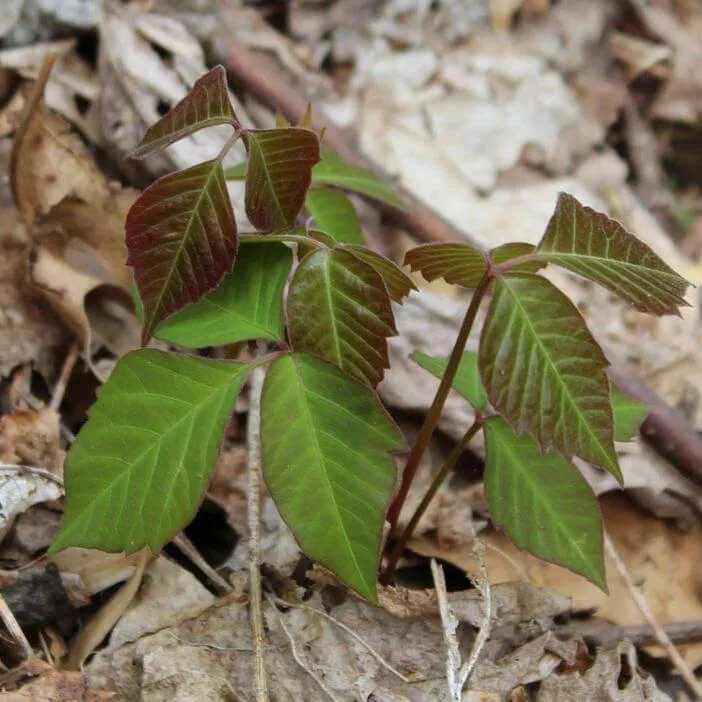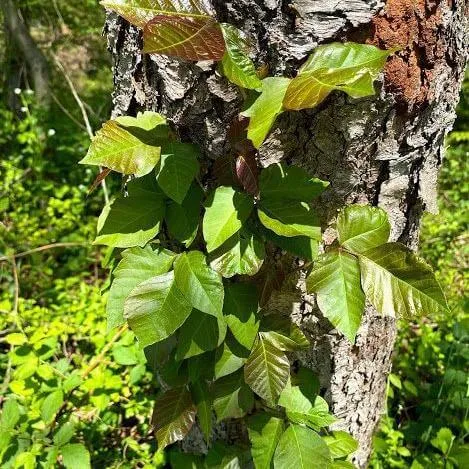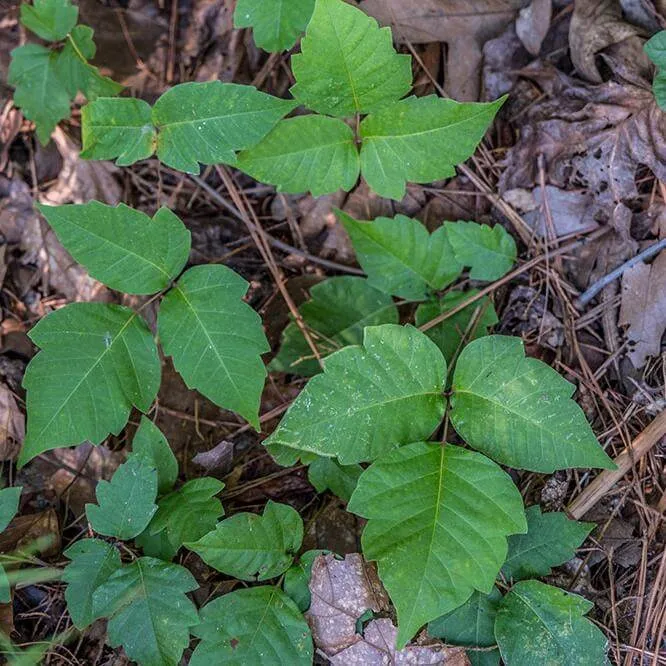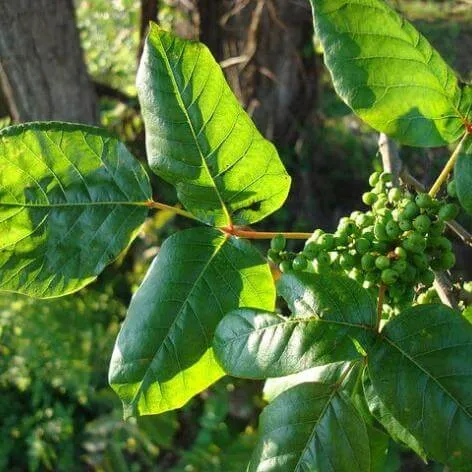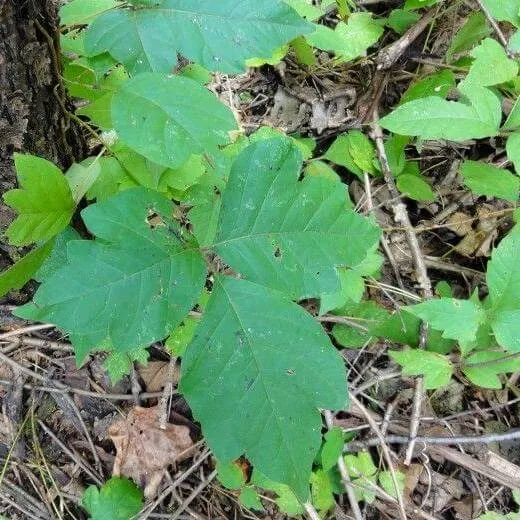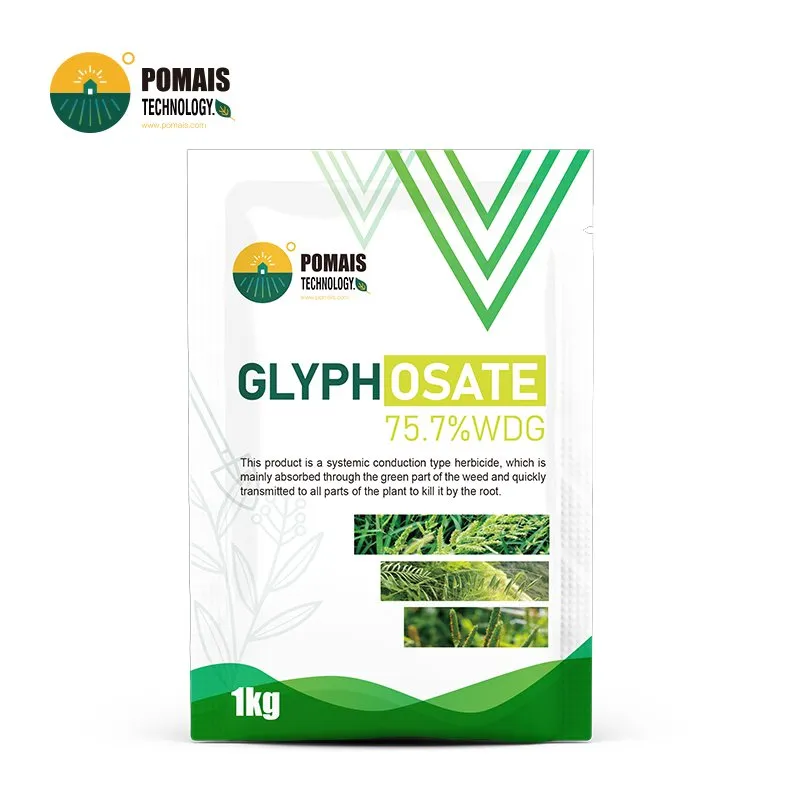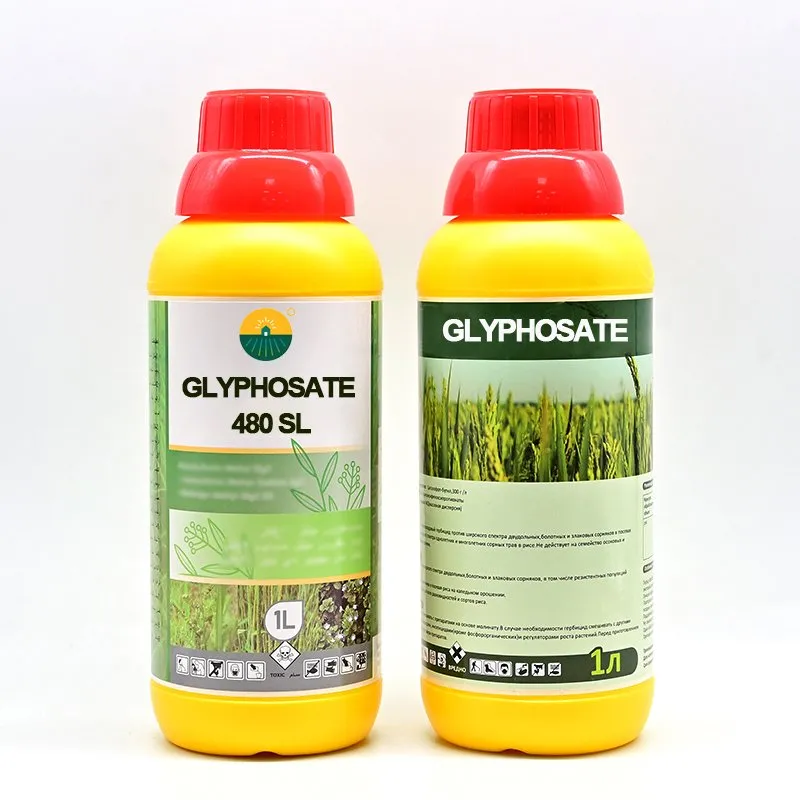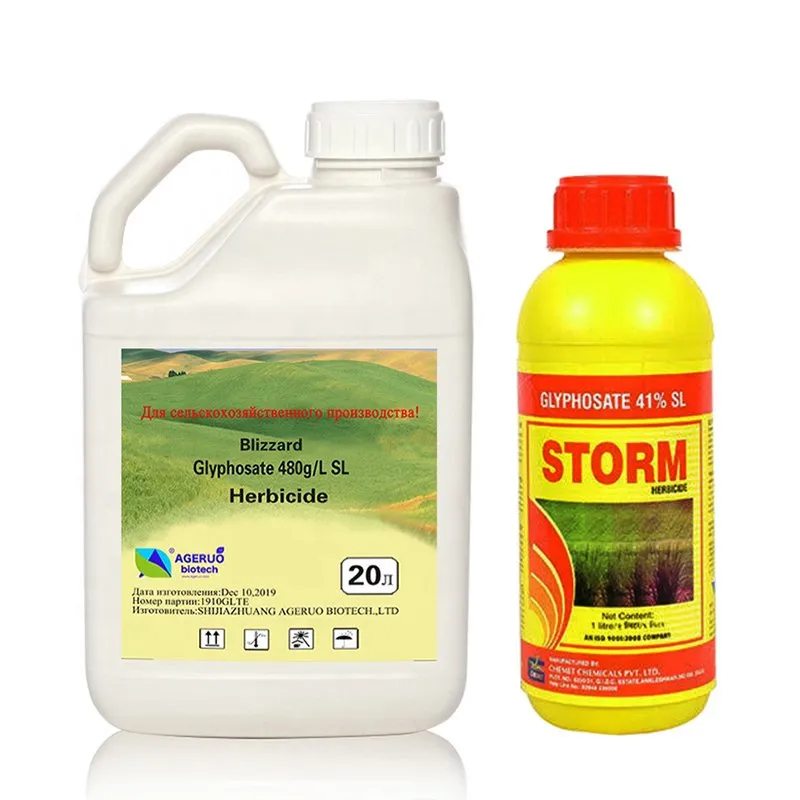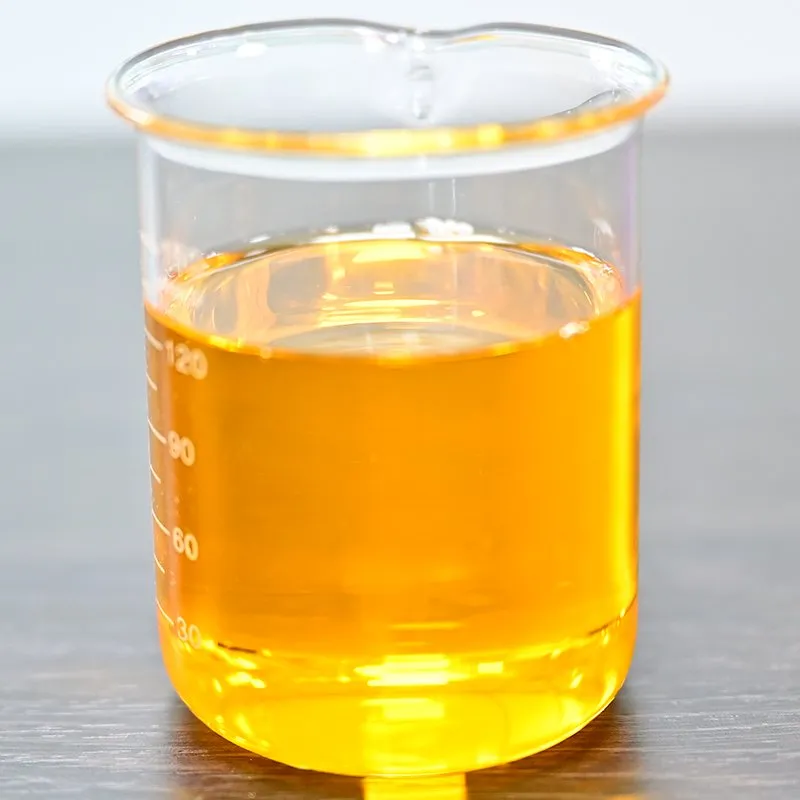Triclopyr vs. Glyphosate for Poison Ivy: Which Herbicide Works Best?
Poison ivy (Toxicodendron radicans) is a highly invasive vine that spreads aggressively in yards, pastures, and wooded areas. Its oil (urushiol) causes severe skin irritation, leading to rashes and allergic reactions in most people who come into contact with it. Because of its deep root system and ability to regrow, poison ivy can be difficult to eliminate with manual removal alone, making herbicide treatment one of the most effective control methods.
When it comes to herbicides, Triclopyr and Glyphosate are two of the most commonly used options. Each has unique properties, and the best choice depends on your specific environment and goals.
Comparing Triclopyr and Glyphosate for Poison Ivy Control
Introduction to Triclopyr and Glyphosate
Triclopyr and Glyphosate are both systemic herbicides, meaning they travel through the plant to kill it at the root. However, they work differently, target different types of plants, and have different environmental impacts.
- Triclopyr is a selective herbicide that targets broadleaf and woody plants while leaving grasses unharmed.
- Glyphosate is a non-selective herbicide that kills all vegetation, including grasses, weeds, and woody plants.
Understanding these differences can help you choose the best herbicide for your situation.
Triclopyr vs. Glyphosate: A Detailed Comparison
| Feature | Triclopyr | Glyphosate |
|---|---|---|
| Selectivity | Kills broadleaf weeds & woody vines, but does not harm grasses | Kills all plants, including grasses and broadleaf plants |
| Effectiveness on Poison Ivy | Highly effective, especially for mature and young plants | Effective, but may require multiple applications for mature plants |
| Residual Soil Effect | Lasts weeks to months, preventing regrowth | Breaks down quickly, requiring reapplication if new growth appears |
| Best Use Case | Lawn, pasture, grassland, or areas where you want to preserve grass while eliminating poison ivy | Fence lines, sidewalks, driveways, and areas where complete vegetation removal is needed |
| Reapplication Needed? | Less frequent, due to residual effects | More frequent, since it does not prevent regrowth |
Best Practices for Using Triclopyr and Glyphosate on Poison Ivy
Regardless of which herbicide you choose, applying it correctly is key to effectively eliminating poison ivy.
Step 1: Choose the Right Time for Application
- The best time to spray poison ivy is late spring through summer, when the plant is actively growing.
- Avoid applying in extreme heat or immediately before rainfall, as this can reduce effectiveness.
Step 2: Prepare the Herbicide Solution
- Triclopyr Mixing Ratio:
- Ready-to-use products can be applied directly.
- For concentrates, mix 4–8 oz of Triclopyr per gallon of water for foliar application.
- Glyphosate Mixing Ratio:
- For poison ivy, use a 2-3% solution (2-3 oz per gallon of water).
- A higher concentration (5% or more) may be required for stubborn, mature vines.
Step 3: Apply Herbicide to Poison Ivy Leaves and Stems
- Spray thoroughly, ensuring leaves are fully coated for absorption.
- For climbing poison ivy on trees or fences, cut the vine at the base and immediately apply herbicide to the fresh cut (this prevents regrowth from the root system).
Step 4: Monitor and Reapply If Necessary
- Poison ivy should start wilting within 24-48 hours after treatment.
- If regrowth appears, apply a second treatment in 3-4 weeks.
Additional Tips to Prevent Poison Ivy Regrowth
Poison ivy is a resilient plant, so long-term management is essential.
- Use Mulch or Landscape Fabric – This blocks sunlight and prevents new growth.
- Monitor for New Sprouts – Hand-pull small plants before they establish deep roots.
- Use a Pre-Emergent Herbicide – Herbicides with Imazapyr or Oryzalin can prevent poison ivy seeds from sprouting.
- Mow Infested Areas Regularly – This weakens poison ivy over time and discourages re-establishment.
Safety Precautions When Applying Herbicides
Poison ivy contains urushiol oil, which can cause severe skin irritation. When handling herbicides, follow these safety guidelines:
- Wear Protective Clothing – Long sleeves, gloves, eye protection, and a mask are recommended.
- Apply on Calm Days – Avoid spraying on windy days to prevent drift onto desirable plants.
- Clean Tools and Hands – Wash equipment, gloves, and any exposed skin immediately after application to avoid contamination.
Final Thoughts: Choosing the Best Herbicide for Poison Ivy
- Choose Triclopyr if you need to kill poison ivy while keeping grass intact.
- Choose Glyphosate if you want to eliminate all vegetation, including grasses.
For long-term control, combining herbicide treatments with preventative measures ensures poison ivy does not return. By following proper application techniques and safety precautions, you can effectively eliminate poison ivy and prevent regrowth.
Poison ivy (Toxicodendron radicans) is a highly invasive vine that spreads aggressively in yards, pastures, and wooded areas. Its oil (urushiol) causes severe skin irritation, leading to rashes and allergic reactions in most people who come into contact with it. Because of its deep root system and ability to regrow, poison ivy can be difficult to eliminate with manual removal alone, making herbicide treatment one of the most effective control methods.
When it comes to herbicides, Triclopyr and Glyphosate are two of the most commonly used options. Each has unique properties, and the best choice depends on your specific environment and goals.
Comparing Triclopyr and Glyphosate for Poison Ivy Control
Introduction to Triclopyr and Glyphosate
Triclopyr and Glyphosate are both systemic herbicides, meaning they travel through the plant to kill it at the root. However, they work differently, target different types of plants, and have different environmental impacts.
- Triclopyr is a selective herbicide that targets broadleaf and woody plants while leaving grasses unharmed.
- Glyphosate is a non-selective herbicide that kills all vegetation, including grasses, weeds, and woody plants.
Understanding these differences can help you choose the best herbicide for your situation.
Triclopyr vs. Glyphosate: A Detailed Comparison
| Feature | Triclopyr | Glyphosate |
|---|---|---|
| Selectivity | Kills broadleaf weeds & woody vines, but does not harm grasses | Kills all plants, including grasses and broadleaf plants |
| Effectiveness on Poison Ivy | Highly effective, especially for mature and young plants | Effective, but may require multiple applications for mature plants |
| Residual Soil Effect | Lasts weeks to months, preventing regrowth | Breaks down quickly, requiring reapplication if new growth appears |
| Best Use Case | Lawn, pasture, grassland, or areas where you want to preserve grass while eliminating poison ivy | Fence lines, sidewalks, driveways, and areas where complete vegetation removal is needed |
| Reapplication Needed? | Less frequent, due to residual effects | More frequent, since it does not prevent regrowth |
Best Practices for Using Triclopyr and Glyphosate on Poison Ivy
Regardless of which herbicide you choose, applying it correctly is key to effectively eliminating poison ivy.
Step 1: Choose the Right Time for Application
- The best time to spray poison ivy is late spring through summer, when the plant is actively growing.
- Avoid applying in extreme heat or immediately before rainfall, as this can reduce effectiveness.
Step 2: Prepare the Herbicide Solution
- Triclopyr Mixing Ratio:
- Ready-to-use products can be applied directly.
- For concentrates, mix 4–8 oz of Triclopyr per gallon of water for foliar application.
- Glyphosate Mixing Ratio:
- For poison ivy, use a 2-3% solution (2-3 oz per gallon of water).
- A higher concentration (5% or more) may be required for stubborn, mature vines.
Step 3: Apply Herbicide to Poison Ivy Leaves and Stems
- Spray thoroughly, ensuring leaves are fully coated for absorption.
- For climbing poison ivy on trees or fences, cut the vine at the base and immediately apply herbicide to the fresh cut (this prevents regrowth from the root system).
Step 4: Monitor and Reapply If Necessary
- Poison ivy should start wilting within 24-48 hours after treatment.
- If regrowth appears, apply a second treatment in 3-4 weeks.
Additional Tips to Prevent Poison Ivy Regrowth
Poison ivy is a resilient plant, so long-term management is essential.
- Use Mulch or Landscape Fabric – This blocks sunlight and prevents new growth.
- Monitor for New Sprouts – Hand-pull small plants before they establish deep roots.
- Use a Pre-Emergent Herbicide – Herbicides with Imazapyr or Oryzalin can prevent poison ivy seeds from sprouting.
- Mow Infested Areas Regularly – This weakens poison ivy over time and discourages re-establishment.
Safety Precautions When Applying Herbicides
Poison ivy contains urushiol oil, which can cause severe skin irritation. When handling herbicides, follow these safety guidelines:
- Wear Protective Clothing – Long sleeves, gloves, eye protection, and a mask are recommended.
- Apply on Calm Days – Avoid spraying on windy days to prevent drift onto desirable plants.
- Clean Tools and Hands – Wash equipment, gloves, and any exposed skin immediately after application to avoid contamination.
Final Thoughts: Choosing the Best Herbicide for Poison Ivy
- Choose Triclopyr if you need to kill poison ivy while keeping grass intact.
- Choose Glyphosate if you want to eliminate all vegetation, including grasses.
For long-term control, combining herbicide treatments with preventative measures ensures poison ivy does not return. By following proper application techniques and safety precautions, you can effectively eliminate poison ivy and prevent regrowth.

